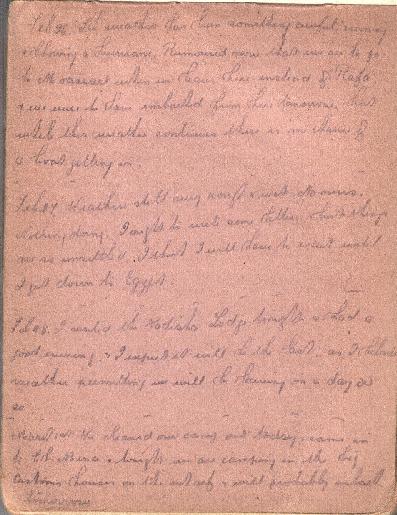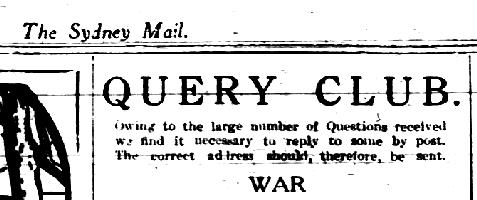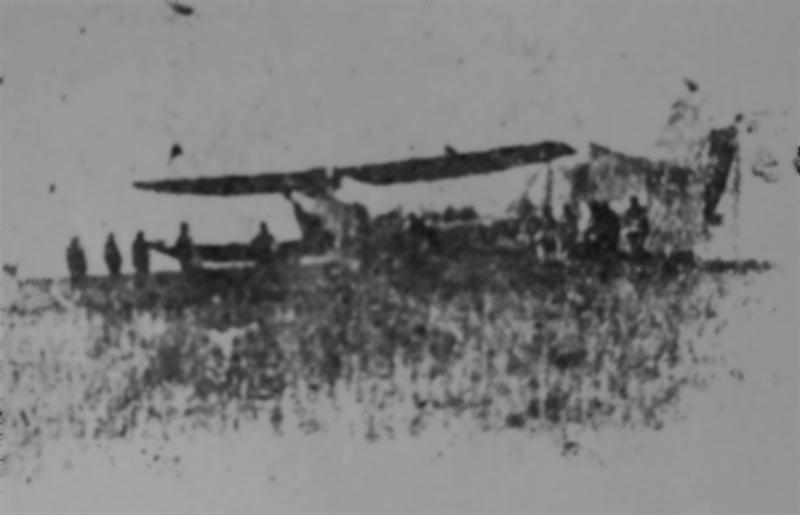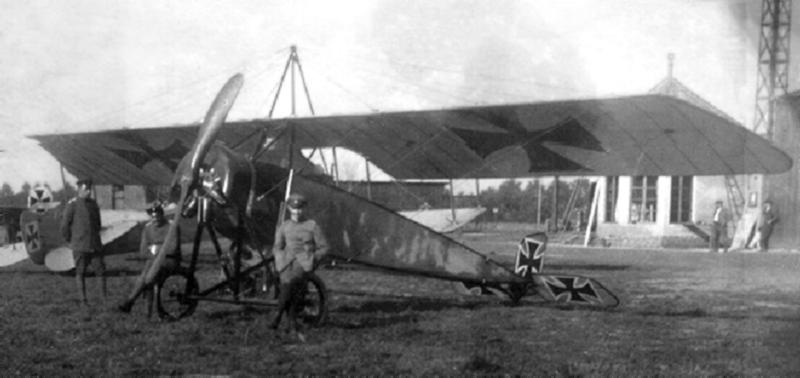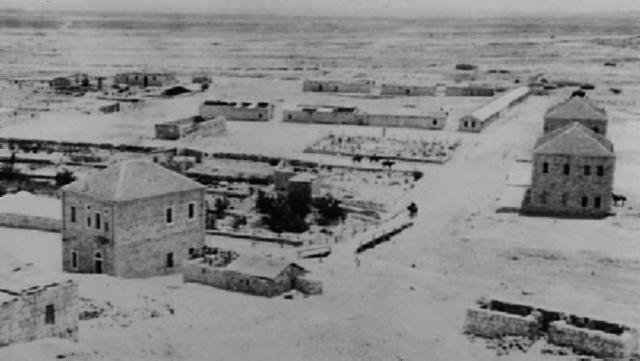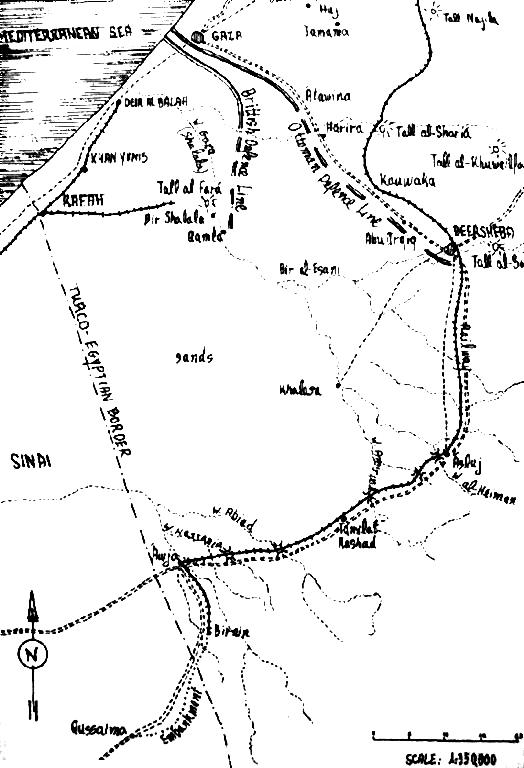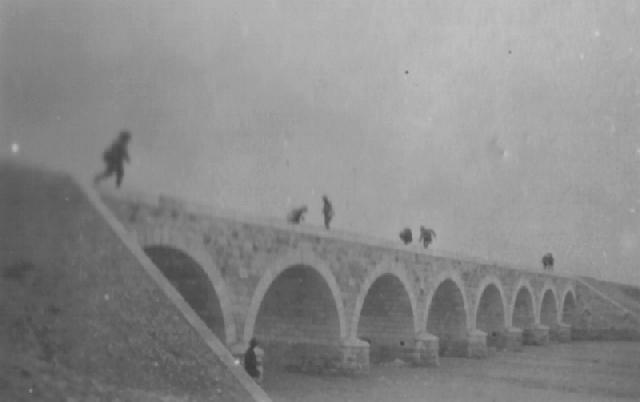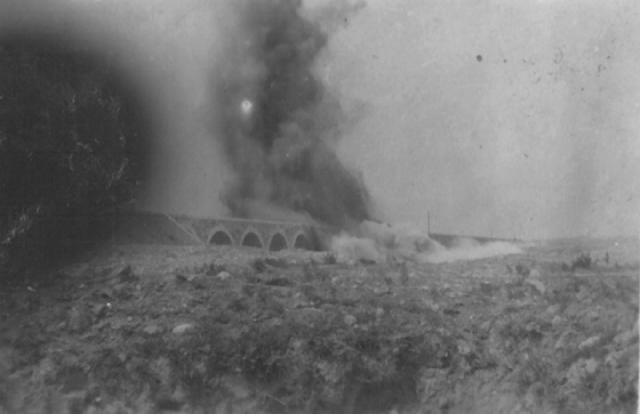Topic: Tk - Bks - Air Force
Pasha and Yildirim, the Palestine Front, 1915 to 1918
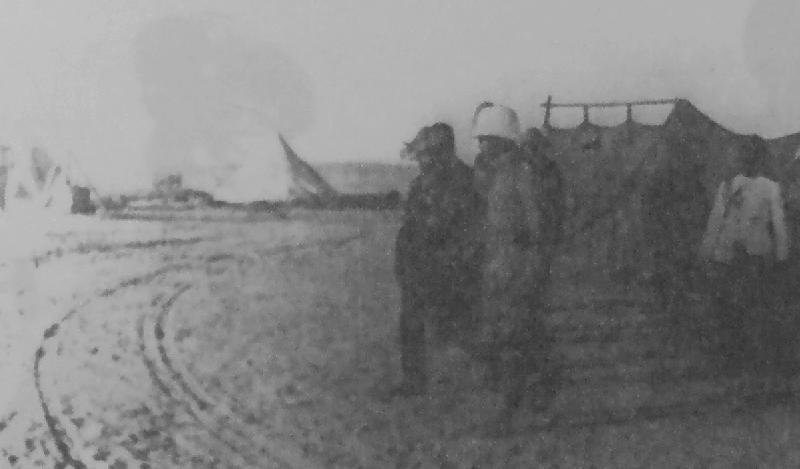
[From: Ole Nikolajsen, Ottoman Aviation 1911 - 1919, p. 203.]
Part 2 - Pasha I
To take pressure off the Gallipoli front, a renewed attack on the Suez Canal was planned by the Ottoman High Command to take place in the beginning of 1916. As the Turkish flying units possessed neither personnel nor aircraft for such a large undertaking, Germany agreed to send pure German units to support and lead the attack. A flying unit, an anti-aircraft battery, a heavy howitzer battery and several machine-gun companies were promised. [For the War Diary of the 605th Machine Gun Company, see: German Units - 605th Machine Gun Company]
The aircraft unit, Fliegerabteilung 300 "Pasha" was established on 24 December 1915 at Dallgow-Döberitz, in Germany. The officers of the unit had their first meeting in January and an advance party was formed. This comprised the Commanding Officer, Captain Heemskerck, 2 pilots, 2 observers and 41 other personnel as well as 2 Rumpler C.I's with special coolers, one Pfalz E.I fighter, three trucks and supplies for three months. The advanced party left for Turkey on 20 February. The party travelled via a long and complicated route through Eastern Europe, Anatolia, Syria and Palestine, travelling on rail, ship, ox-cart and road. They arrived at the prepared field at Beersheba on 1 of April. Two hours after their arrival the Pfalz, named “Käthe” and piloted by Lieutenant Henckel, came by air. The duties of the small unit were to provide reconnaissance over the sea to search for British seaplane tenders and covering the Sinai desert to observe British advance units.
On 19 April, two Rumplers were ordered to El Arish from which an armed expedition was sent towards the oasis of Katia. During the next days several sorties were carried out over the Suez Canal, Romani and Port Said.
The main party of FA300 arrived on 30 April bringing with them 4 additional pilots, 3 observers and 4 Rumplers equipped with wireless transmitters. A base receiver station was erected at the field. All six Rumplers were air worthy on 7 May, and one was immediately given the task of photographing the Suez Canal and surrounding fortifications. The five others were ordered to make bombing attacks on Suez City, Ismailia and Port Said to disrupt shipping. The last part of the unit arrived on 18 May with another two crews but only one Rumpler as the other had been lost on a flight near Jerusalem.
Initially setbacks were experienced by the Aircraft Company. First on 9 May, one of the Rumplers was destroyed on the ground by a British attack.
The next setback [175] occurred the following day [10 May] when the British, who apparently were well informed, struck the new airfield with 12 aircraft. They left 2 Rumplers completely destroyed and the Pfalz damaged. Three pilots and five mechanics were severely injured.
Although a heavy blow, the raids did not discourage the unit, and on the same day a British warship was attacked off the coast. This made the whole British fleets steam west, not to be observed again for a long time. Another counter-blow was dealt the British Navy on 26 May when the seaplane tender "Raven II" was bombed and damaged in Suez harbour.
The first air-duel in the area was fought two days later [28 May] near the Suez Canal between a Farman and a Rumpler. The Farman had the advantage of a front gun and the Rumpler returned with 18 bullet holes in the fuselage and wings.
On 16 June was FA300 with its full complement of six Rumplers and the Pfalz ordered to proceed to El Arish in preparation for the canal attack.
Map of air activities covered by this extract
[From: Ole Nikolajsen, Ottoman Aviation 1911 - 1919, p. 176.]
[Click on map for larger version.]
Finally the new canal attack moved ahead and from 1 July, FA300 was given the task to employ all means possible to prevent British aircraft from observing the Turkish and German column of 15,000 men moving out of El Arish. When Turkish advance units reached the oasis at Bir el Abd on 15 July a detachment with one Rumpler was stationed there to cut off any approaching British aircraft.
The advance through the desert with the heavy guns in the intense summer heat soon became painfully slow and it was not until one month later that an attack on the British lines near Romani could be launched.
After stubborn fighting the oasis was taken on the 17th of August but at this crucial time a British encouraged Arab uprising took place. Most of the Arab regiments constituting the main force of the Turkish column defected to the British side. [Editor’s note: This paragraph has been left as it was in the original manuscript. The Battle of Romani was fought from 4-6 August while the Battle of Bir el Abd occurred on 9 August after which the Canal invasion force retreated back to El Arish leaving a rear guard at Bir el Mazar.]
Consequently a hurried Turkish withdrawal had to take place and in this, the FA300 played a significant role in providing rear cover. The harassment of the British cavalry force was so successful that all contact between the two armies was lost. The Turkish attack force was successful in withdrawing with all its precious heavy howitzers.
During the operations Lieutenant Henckel, being an engineer, managed to shoot down a Bristol Scout with a self-constructed synchronised frontal machine-gun.
By now the heavy workload had completely exhausted FA300's supplies and little ammunition while only 800 litres of petrol remained. An officer flew to Damascus to arrange for new supplies and here he was greeted by a team of new reinforcements and supplies on their way to FA300. They arrived in mid September at the Beersheba airfield. The reinforcements included the new Commanding Officer, Captain Felmy, 3 replacement crews, 6 new Rumpler C.I's and two Fokker E.III fighters.
At this time had the FA300 detachment withdrawn from Bir el Abd and by 27 August the complete unit was back at El Arish.
On 15 September a large attack by British seaplanes was made. Unlike the attack in June, this time the FA300 had been alerted and watched the seaplane tenders approach. Two Rumplers and the Pfalz intercepted the attackers, shot down one and forced another into the sea. Thereafter the Rumplers promptly returned to base and one hour later attacked the seaplane tenders with bombs and machine-gun fire, forcing them to retire westwards.
Even though all Turkish forces were well back at El Arish, a further withdrawal to Gaza was initiated. FA300 returned to Beersheba on 25 September. This was done by three night marches with the assistance of 300 heavily laden camels. At Beersheba the headquarters was re-established with 9 Rumplers, 2 Fokker E.III's and a barely air worthy Pfalz E.I. Captain Heemskerck and 3 of the first members of FA300 returned to Germany.
During the following months, the Turkish forces were reorganizing around Gaza while the British moved slowly ahead in the desert building a supporting railway track. This was a period of attrition in the air.
On 8 November a Rumpler was lost to British anti-aircraft fire. An air-duel took place on 11 November, the Rumpler pilot was victorious. In this month a last bombing attack by a formation of 3 Rumplers was made on the Suez Canal and Port Said, using El Arish as a refuelling point. Fuel was brought by two additional Rumplers. Shortly afterwards was El Arish abandoned by the Turks without a fight. During December several battles developed in the air all without losses for FA300. The British however lost aircraft on the 2nd, 3rd and 9th of November 1916. Altogether 14 British aircraft were claimed shot down by FA300 in the period between 1 April and 31 December 1916. Fifteen more were claimed shot down by ground fire. (Only aircraft in which a wreckage was found, or prisoners taken as proof, are included in this total.)
Despite the unquestionable air superiority gained by FA300 in this period the high number of British aircraft and their shorter supply line made them able to perform a number of concentrated attacks on the airfield at Beersheba. No important German equipment was lost in these nuisance raids, as all [178] aircraft and vital equipment had been dispersed.
The raids however soon became such a menace that headquarters and equipment of FA300 was relocated on 10 January 1917 to a new field near the old monastery at Ramleh. The workshops were transferred to Damascus where they eventually supported all Palestine aircraft units. On 1 March the old personnel of FA300 were relieved by new battle proven western front crews arriving from Germany. Soon also 8 new Rumpler C.I's with a synchronised forward firing gun were received. During the next months, the surviving 7 old Rumplers were sent to the Damascus Aircraft Station and after refurbishing re-issued to the Turkish 3ncu Tayyare Boluk (3rd Aircraft Company).
Source: The above extract is obtained from a self published work by Ole Nikolajsen called Ottoman Aviation 1911 - 1919. Pasha I comes from Chapter 8, Pasha and Yildirim, the Palestine Front, 1915 to 1918, pp. 175-9. The text has been edited to remove errors and make it readable for an English speaking audience.
Further Reading:
German Units - 605th Machine Gun Company
Air War on the Palestine Front, December 1915 to January 1917
Turkish Units - The Ottoman Air Force
Lieutenant Colonel Hüseyin Hüsnü Emir, Yildirim
Go To:
Previous Chapter: A Token Force
Next Chapter: 3ncu Tayyare Boluk (The 3rd Aircraft Company)
Citation: Pasha I





